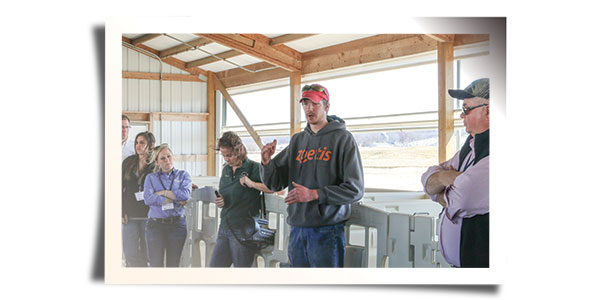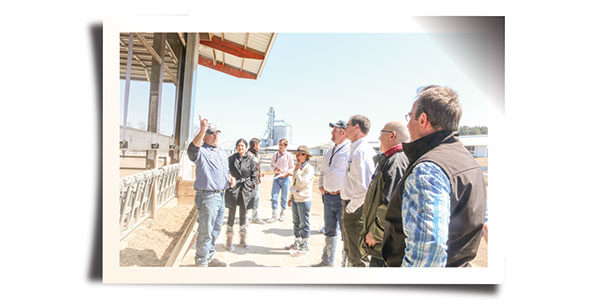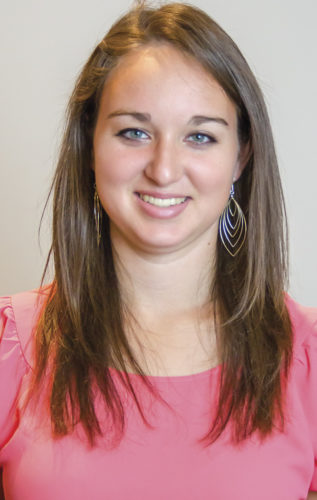With 362 attendees representing 23 states, six countries and more than 500,000 head of calves and heifers, the 2015 annual Dairy Calf and Heifer Conference (DCHA) was one of the better-attended conferences in the past several years. This year, DCHA hosted the event in Madison, Wisconsin, on March 31 and April 1.
For attendees who arrived early, the University of Wisconsin School of Veterinary Medicine and the Wisconsin Veterinary Diagnostics Lab hosted a pre-conference tour and lab demonstration on March 30.
Dr. Dan Sockett, Wisconsin Veterinary Diagnostics lab; Dr. Theresa Ollivet, UW School of Veterinary Medicine; and Dr. Keith Poulsen, Wisconsin Veterinary Diagnostics Lab, presented at the event – which focused on calf respiratory scoring, thoracic ultrasounding and pharyngeal swabbing. Sockett also gave attendees a tour of the university’s diagnostics lab and discussed the work that takes place there.
The official start of the conference was Tuesday morning. Dr. Sam Barringer, Merck Animal Health, kicked off the presentations with his discussion, “Professional calf raising through the eyes of a special operations soldier.”
Barringer used his experiences in the military and knowledge as a veterinarian to discuss the components of an effective calf-raising system. He put a special emphasis on problem solving, leadership and adapting to the challenges at hand.
To illustrate his point, Barringer pulled up a picture of him with a lion. During his time in the military, he had needed to tranquilize, sedate and operate on an adult, male lion. While he had some of the tools he needed for the job, “How to operate on a wild lion with limited resources” had not been the name of one of his courses in veterinary school.
Rather than give up, Barringer analyzed the situation, improvised with the resources he had and was successful. He encouraged attendees to do the same when they face challenges on their own operations.
The next three sessions were split into tracks and covered a variety of topics such as management, animal welfare and dairy beef. “Facilities designed for calf health” was one session many attendees were especially interested in. Dr. Ken Nordlund, UW – Madison, presented on the topic.
He said although calf hutches remain the “golden standard” for calf raising, calf barns are an excellent alternative with benefits such as better working conditions for employees. While air conditions in calf barns remains a major topic of discussion, he is pleased with the performance of positive-pressure tube systems to supplement natural ventilation and deliver air to the calf without creating a draft.
Nordlund recommended an all-in, all-out system whether calves are individually housed in pens or in groups. This helps to control disease because calves are not exposed to infected calves from another group and because the pen can be completely cleaned out between each group, further limiting the spread of disease.
Tom Wall of Dairy Interactive LLC and Language Links LLC wrapped up Tuesday’s presentations with his discussion on “Managing your team – Up, down and all around.” His presentation went over the importance of solid leadership, preparation and proper management of employees. Using some common challenges, he pointed out to his audience the key issues to be aware of and how to prepare for and overcome them.
According to Wall, employees will perform at the level they are required to perform at in order to keep their position. If every employee receives an annual raise whether they show up to work 10 minutes early or 10 minutes late every day, then pretty soon they will all show up late. Reward the employee who goes above and beyond and encourage him to keep performing at his highest level, Wall said.
Wall went on to tell his audience that every group has a leader, whether it is the one who has been appointed as leader or not. He told attendees they need to evaluate their employees and make sure the person in charge is the person leading the team. If not, then it is time to make decisions to determine who should be on the team and who should lead it.
Wednesday morning’s presentations began with two producer panels. The first one was on new technologies and how three different producers were using them on their own operations.
The second panel, “Across the country: Calf employee and manager perspectives,” included Tracy Loos, Rosy-Lane Holsteins in Watertown, Wisconsin; Darin Mann, M&M Feedlot in Parma, Idaho; and Aaron Harpster, Evergreen Farms in Spruce Creek, Pennsylvania. Although their operations varied in size and location, the panelists all mentioned some common problems, mainly labor and following SOPs. Harpster said delegation is one of his issues.
“Consistency of cleaning the bottles and some of the equipment – that is a challenge for us,” Harpster said. “It’s right where everybody can see, but they still seem to overlook it sometimes. It may be one of those things where it’s everybody’s responsibility, but nobody does it. It might be a little bit of a delegation thing from my crew.”

Mann and Loos both named procedural drift as a major problem. Loos has tackled the issue through training and working with every employee to make sure they fully understand their job.
Mann attributed the problem to employee turnover. While the feedlot where he raises his older heifers has been in business for many years, their calf facility is less than two years old and has yet to have an established culture like the feedlot.
“At the heifer facility, we’ve established a culture,” Mann said. “I don’t think we quite have that culture established at the calf facility, so it’s led to some high turnover. It’s a matter of them having more pride in their job and probably me recognizing them more for their accomplishments and thanking them and making sure they have adequate challenges to stay interested in their job.”
Brad Scott of Scott Brothers Dairy Farm, wrapped up the conference’s presentations with his keynote address on “Changing perception on a reality show: Undercover Boss comes to the farm.” Scott shared his experiences with letting a Hollywood film team and the CEO of Menchies, Amit Kleinberger, visit his dairy to tape an episode for a reality TV show.
Since their dairy is one of Menchies’ main suppliers, Kleinberger wished to include them in his undercover experience. While Scott had plenty of concerns going into filming, the public’s positive response to it made him glad he took the risk and realize how important opportunities like these are for the dairy industry.
However, Scott panicked momentarily when people started asking what happened to Alan, the bull calf born on the show. Thankfully, Alan, now a steer, was still alive and well at the dairy. Thanks to his celebrity status, Scott said he plans to keep him there, although he is fairly certain Alan is well aware of his good fortune and may be a little smug about it.
Scott is proud at how his herd manager, Francisco, represented them on the show. He said that is how Francisco is and how their operation runs every day. All in all, it was a good experience and a risk he’s glad he took.
Wednesday afternoon, interested attendees visited Doerfer Bros. Farm in Verona, Wisconsin, and Larson Acres in Evansville, Wisconsin. Doerfers’ calf barn was built in 2012. While they are pleased with the facility, it is not without its challenges, mainly space. The barn was built to have 25 head in each pen, giving each calf 35 square feet of space.
However, after playing around with it a bit, Doerfer recommends 40 square feet of space per calf. Still, their calves are doing well and about six months ago the calves raised in the new facility began to join the milking herd. So far they have seen an average increase of 11 pounds of milk at 90 days in milk from the cows raised in the facility. PD
PHOTOS
Farm owners and managers answer questions about their operations for event visitors during facility tours on the final day of the conference. Photos by Jenna Hurty.

Jenna Hurty
Editor
Progressive Dairyman





